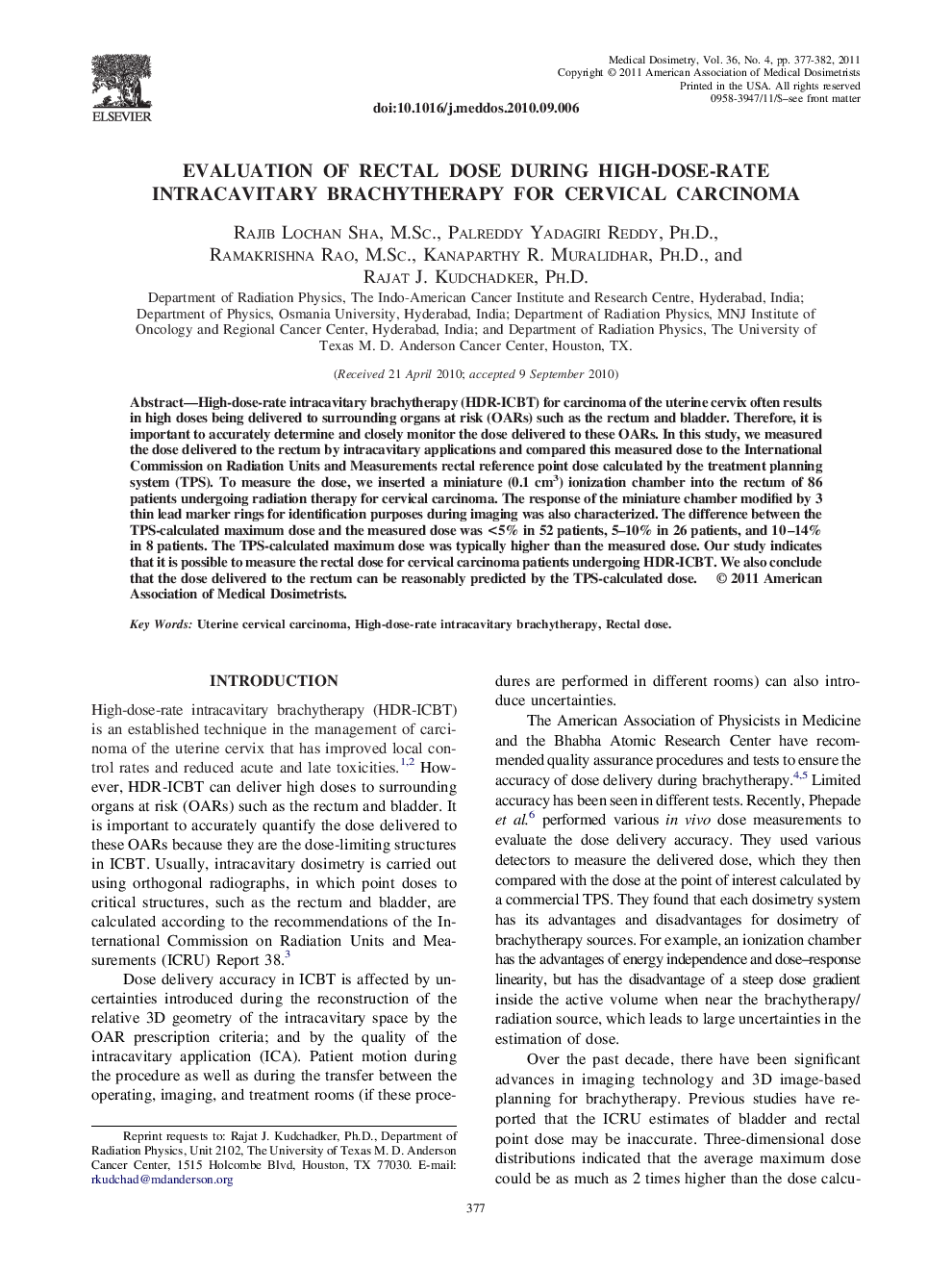| Article ID | Journal | Published Year | Pages | File Type |
|---|---|---|---|---|
| 1885173 | Medical Dosimetry | 2011 | 6 Pages |
Abstract
High-dose-rate intracavitary brachytherapy (HDR-ICBT) for carcinoma of the uterine cervix often results in high doses being delivered to surrounding organs at risk (OARs) such as the rectum and bladder. Therefore, it is important to accurately determine and closely monitor the dose delivered to these OARs. In this study, we measured the dose delivered to the rectum by intracavitary applications and compared this measured dose to the International Commission on Radiation Units and Measurements rectal reference point dose calculated by the treatment planning system (TPS). To measure the dose, we inserted a miniature (0.1 cm3) ionization chamber into the rectum of 86 patients undergoing radiation therapy for cervical carcinoma. The response of the miniature chamber modified by 3 thin lead marker rings for identification purposes during imaging was also characterized. The difference between the TPS-calculated maximum dose and the measured dose was <5% in 52 patients, 5-10% in 26 patients, and 10-14% in 8 patients. The TPS-calculated maximum dose was typically higher than the measured dose. Our study indicates that it is possible to measure the rectal dose for cervical carcinoma patients undergoing HDR-ICBT. We also conclude that the dose delivered to the rectum can be reasonably predicted by the TPS-calculated dose.
Related Topics
Physical Sciences and Engineering
Physics and Astronomy
Radiation
Authors
Rajib Lochan M.Sc., Palreddy Yadagiri Ph.D., Ramakrishna M.Sc., Kanaparthy R. Ph.D., Rajat J. Ph.D.,
